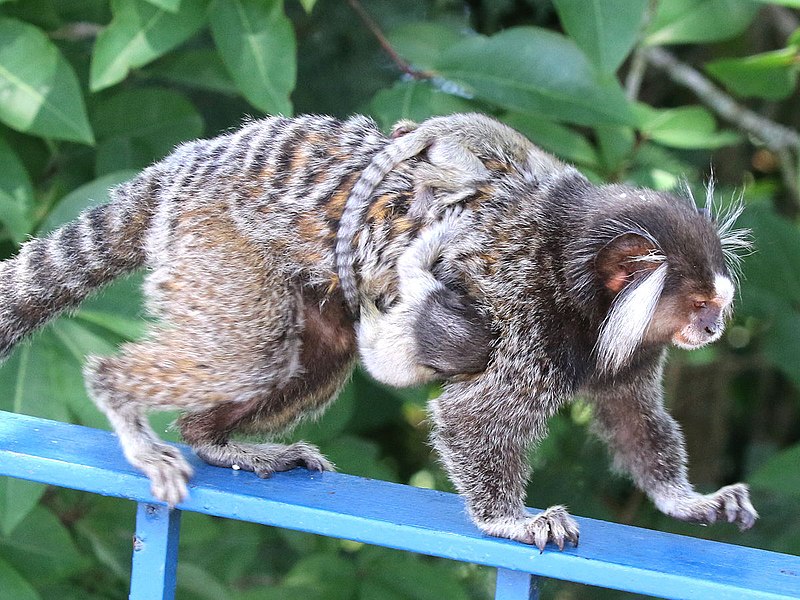It is often observed that the central nervous system of higher primates is quite different from that of other mammals. For example, other mammals have inter-neurons between upper and lower motor neurons, while in higher primates there is a direct connection that could explain their better ability. This difference could explain why some mouse models are ineffective in modeling neurodegenerative diseases.
 Source: Peterwchen via Wikipedia
Source: Peterwchen via Wikipedia
Neurodegenerative diseases are complex multifactorial conditions for which no effective treatments are currently available. Animal models are necessary to understand the causes and progression of neurodegeneration. Nonhuman primates offer significant advantages for the study of neurodegenerative disease.
Among them, the common marmoset, Callithrix jacchus, stands out due to its easy handling, complex brain architecture, and occurrence of spontaneous beta-amyloid and phosphorylated tau aggregates with aging.
Furthermore, marmosets present physiological adaptations and metabolic alterations associated with the increased risk of dementia in humans. In this review, the authors from Center of Research and Advance Studies, Mexico City, discuss the current literature on the use of marmosets as a model of aging and neurodegeneration.
The common marmoset is an important model partly because of their ability to live for an extended period after adulthood. Age-dependent cognitive changes in executive function and spatial working memory have been observed in marmosets. Marmosets display the spontaneous appearance of beta-amyloid aggregates with aging. Amyloid pathology starts as diffuse plaques in young animals. Tau hyperphosphorylation occurs in both young and aging marmosets. However, aged marmosets do not develop neurofibrillary tangles, perhaps due to different isoform expression or amino acid sequence compared with humans and Old World monkeys. Microglia dystrophy and atrophy of astrocytes are associated with neurodegenerative processes in aging marmosets. Common marmosets living in captivity develop various metabolic and gastrointestinal disorders, providing an opportunity to study potential links between metabolic or gut–microbiota alterations and vulnerability to neurodegeneration.
